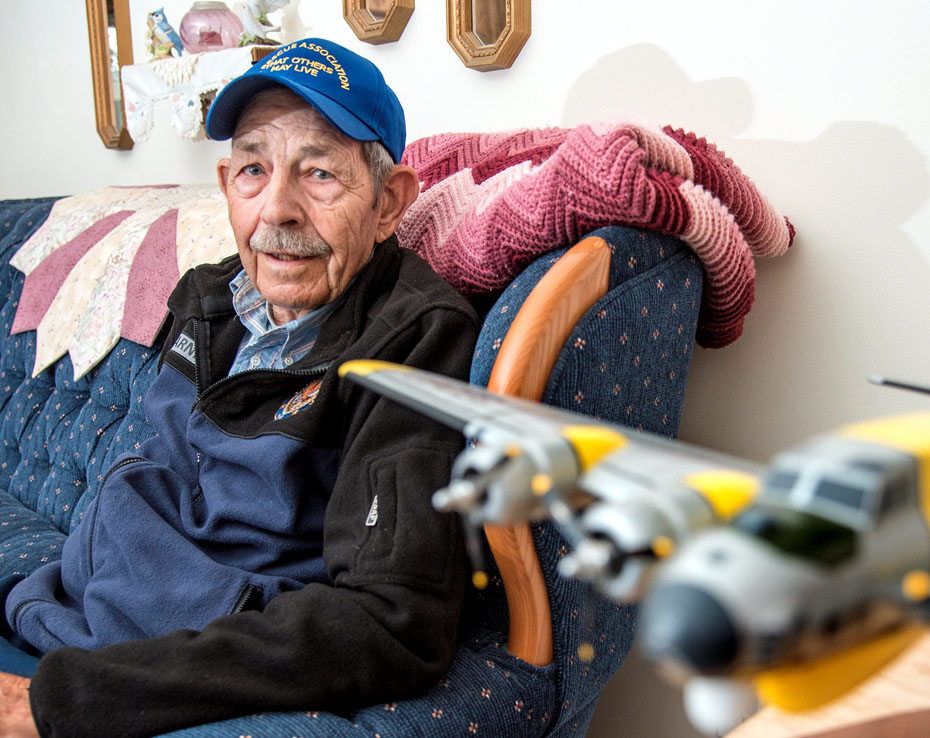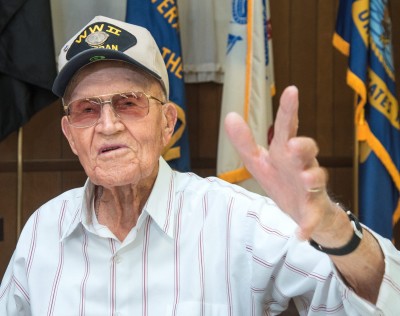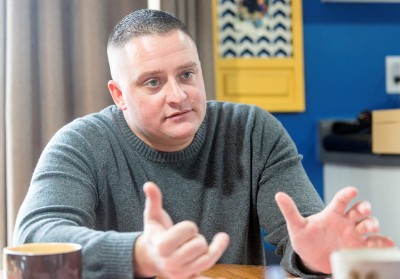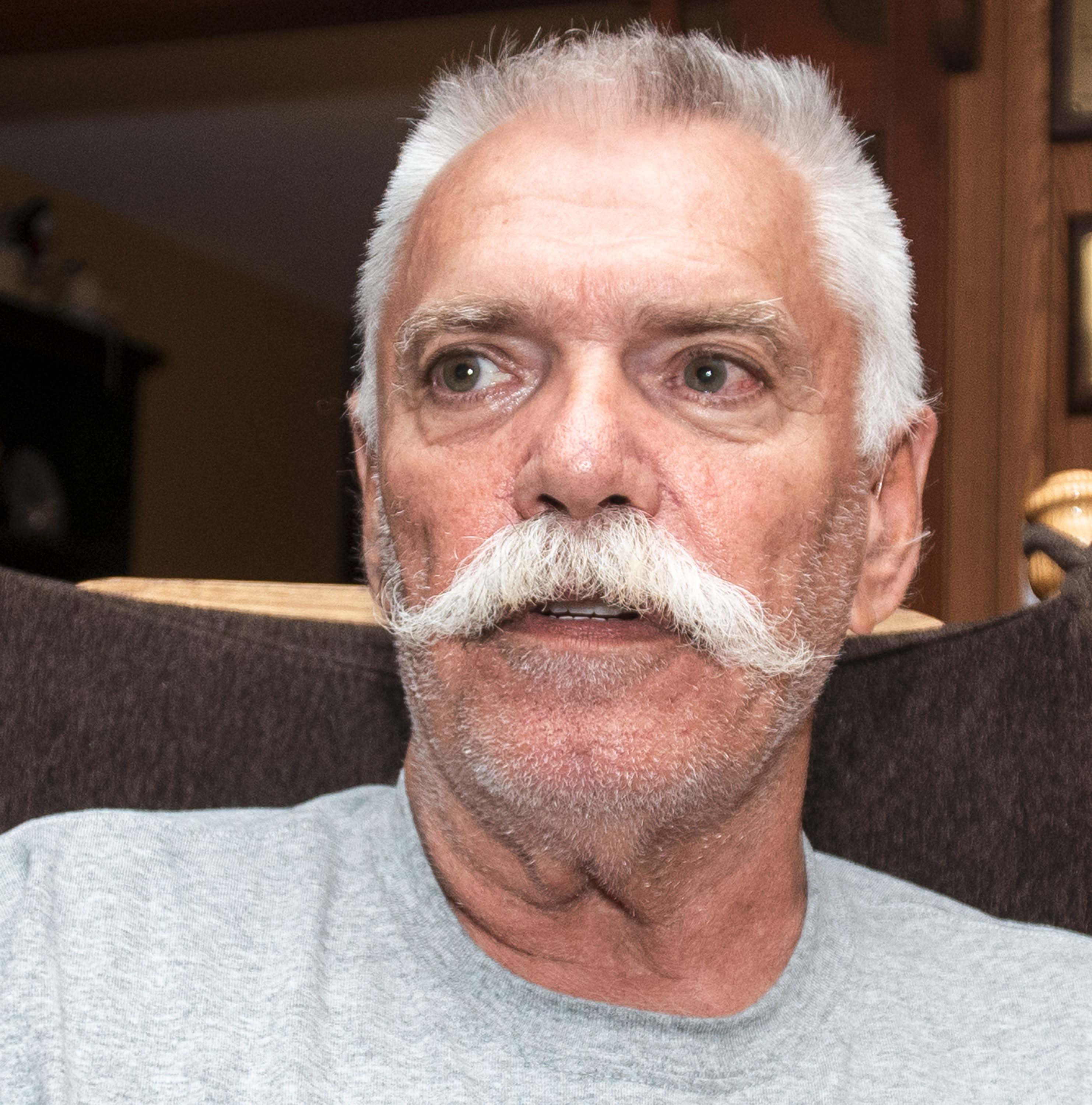Ted Barnhart
By Paul Wood

Photo By Heather Coit/The News-Gazette
CHAMPAIGN — Flying rescue missions during the Korean War, Ted Barnhart was the radar operator as his B-17 skimmed over polar seas.
The Tolono native, now 85, did most of his missions in the Sixth Air Rescue around Labrador, Greenland and Iceland.
In that part of the world, if you landed in the drink, hypothermia would kill you in five minutes, he says.
Barnhart also helped with rescues off the ice.
Planes flew from Maine to Labrador to Greenland in the area his B-17 patrolled. “One of our jobs was getting people to Korea by the northern route,” he says. “It was shorter, and the winds were often with you.”
One of four brothers in the service, Barnhart enlisted in the Air Force in 1950, right out of the new Unity High School — preferring not to serve in the infantry in the coldest of Cold War actions, where soldiers froze to the ground.
He served from 1950 to 1954.
After receiving radar and radio training, first on the ground, he was moved to air rescue.
Barnhart often “flew the grid” over the seas looking for lost aviators.
With crews usually of eight, the B-17 flew with its gunnery removed.
“We did carry .45s,” he says.
His B-17 was fitted with a 37-foot-long Higgins Airborne Lifeboat strapped to the bottom that could be dropped into the Arctic sea.
“It had three parachutes. They detached automatically, and ropes came out for the men to grab,” he says of help for survivors, who were usually in open dinghies in the frigid air.
The Higgins boat was sealed.
“It had motors, food for two weeks, everything you could need until somebody could pick you up,” he says.
“It was very satisfying to rescue somebody,” he adds. “A lot of the time, we couldn’t find anybody alive.”
Sometimes the bomber flew over land, often to get to a U.S. base in Greenland, which is part of Denmark.
In storms, the plane flew under the weather through fjords in Greenland, sometimes having to veer around mountains.
Flying could be interesting in other ways, he says. The shifting magnetic North Pole threw off compasses and radio waves.
“What we were looking for was Soviets trying to infiltrate over there,” Barnhart says.
Before being reassigned to fly over the West Coast, Barnhart had put in a lot of Arctic air time.
For all the missions, he says, he “never had to turn around, never lost a man.”
In 1953, while still in the Air Force, he married his high school sweetheart, Wilma. She has passed away. They had three children.
Barnhart was a University of Illinois Fire Department battalion chief for many years in Champaign — the first one here to drive the new snorkel truck.
He says he’s had about 20 jobs over the years, sometimes two at a time: “I guess it would be fair to say I’m a workaholic.”
Even in his 80s, he has somewhere up to 18 lawns and two churchyards he mows.
Do you know a veteran who could share a story about military service? Contact staff writer Paul Wood at pwood@news-gazette.com.
Read more stories from local veterans:
 Leonard Wirges
RANTOUL — Leonard Wirges risked his life in World War II, then lived through a lot of history, staying in the Army for t …
Leonard Wirges
RANTOUL — Leonard Wirges risked his life in World War II, then lived through a lot of history, staying in the Army for t …
 Pete Milinkovic
CHAMPAIGN — In his second deployment to Iraq, Gunnery Sgt. Pete Milinkovic was wounded by shrapnel, but he held on for a …
Pete Milinkovic
CHAMPAIGN — In his second deployment to Iraq, Gunnery Sgt. Pete Milinkovic was wounded by shrapnel, but he held on for a …
 Phil Wilhelm
MAHOMET — Phil Wilhelm’s body still carries within it shrapnel dating to his two tours of duty in Vietnam. The sergeant, …
Phil Wilhelm
MAHOMET — Phil Wilhelm’s body still carries within it shrapnel dating to his two tours of duty in Vietnam. The sergeant, …